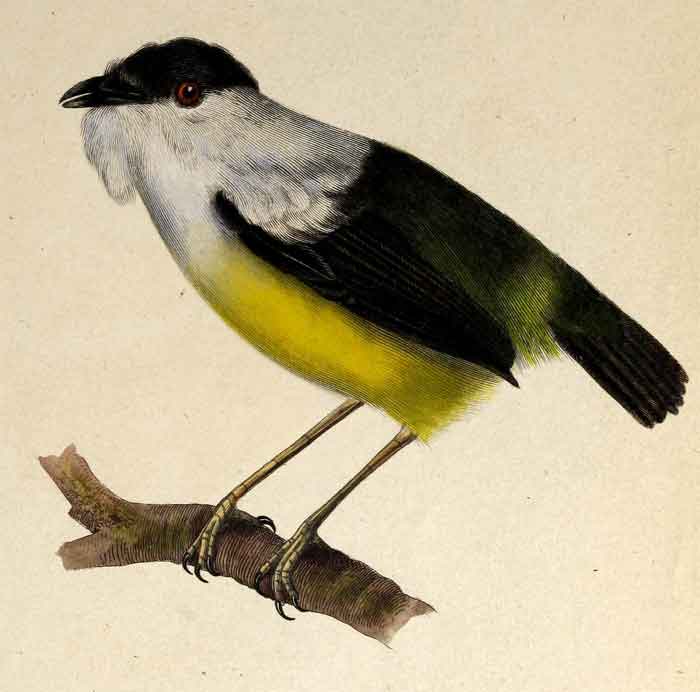Superregnum: Eukaryota
Regnum: Animalia
Subregnum: Eumetazoa
Cladus: Bilateria
Cladus: Nephrozoa
Superphylum: Deuterostomia
Phylum: Chordata
Subphylum: Vertebrata
Infraphylum: Gnathostomata
Megaclassis: Osteichthyes
Cladus: Sarcopterygii
Cladus: Rhipidistia
Cladus: Tetrapodomorpha
Cladus: Eotetrapodiformes
Cladus: Elpistostegalia
Superclassis: Tetrapoda
Cladus: Reptiliomorpha
Cladus: Amniota
Classis: Reptilia
Cladus: Eureptilia
Cladus: Romeriida
Subclassis: Diapsida
Cladus: Sauria
Infraclassis: Archosauromorpha
Cladus: Crurotarsi
Divisio: Archosauria
Cladus: Avemetatarsalia
Cladus: Ornithodira
Subtaxon: Dinosauromorpha
Cladus: Dinosauriformes
Cladus: Dracohors
Cladus: Dinosauria
Ordo: Saurischia
Cladus: Eusaurischia
Cladus: Theropoda
Cladus: Neotheropoda
Cladus: Averostra
Cladus: Tetanurae
Cladus: Avetheropoda
Cladus: Coelurosauria
Cladus: Tyrannoraptora
Cladus: Maniraptoromorpha
Cladus: Maniraptoriformes
Cladus: Maniraptora
Cladus: Pennaraptora
Cladus: Paraves
Cladus: Eumaniraptora
Cladus: Avialae
Infraclassis: Aves
Cladus: Euavialae
Cladus: Avebrevicauda
Cladus: Pygostylia
Cladus: Ornithothoraces
Cladus: Euornithes
Cladus: Ornithuromorpha
Cladus: Ornithurae
Cladus: Carinatae
Parvclassis: Neornithes
Cohors: Neognathae
Cladus: Neoaves
Cladus: Telluraves
Cladus: Australaves
Ordo: Passeriformes
Subordo: Tyranni
Infraordo: Tyrannides
Parvordo: Tyrannida
Familia: Pipridae
Genus: Manacus
Species: M. aurantiacus – M. candei – M. manacus – M. vitellinus
Name
Manacus Brisson, 1760
Typus: Pipra manacus Linnaeus, 1766 = Manacus manacus
Synonyms
Antolta Rafinesque, 1815 Anal.Nat. p.66
Chiromachaeris Cabanis, 1847 Arch.Naturgesch. p.235
Manakina Fischer von Waldheim, 1813 (emend.) Zoogn.Tab.Syn.Ill. ed.3 1 p.31
Manacina [variation]

Manacus candei
References
Brisson, M.J. 1760. Ornithologie ou méthode contenant la division des oiseaux en ordres, sections, genres, especes & leurs variétés. A laquelle on a joint une description exacte de chaque espece, avec les citations des auteurs qui en ont traité, les noms qu'ils leur ont donnés, ceux que leur ont donnés les différentes nations, & les noms vulgaires. Ouvrage enrichi de figures en taille-douce. Tome I. - pp. j-xxiv [= 1-24], 1-526, j-lxxiij [= 1-73], Pl. I-XXXVII [= 1-37]. Paris. (Bauche). Original description p. 44 BHL Reference page. Tome 4, p. 442 BHL
Manacus is a genus of passerine birds in the manakin family which are found in the forests of tropical mainland Central and South America, and on Trinidad and Tobago.
The genus Manacus was introduced by the French zoologist Mathurin Jacques Brisson in 1760 with the white-bearded manakin (Manacus manacus) as the type species.[1][2] The name manacus is from the Dutch manneken "pretty little thing".[3]
The genus contains four species:[4]
Image Scientific name Common Name Distribution
White-collared Manakin - Sarapiqui - Costa Rica MG 0596 (26585018422).jpg Manacus candei White-collared manakin Costa Rica and Panama
Orange-collared Manakin - Rio Tigre - Costa Rica MG 7859 (26651287556).jpg Manacus aurantiacus Orange-collared manakin Panama and Colombia
Stavenn Manacus vitellinus.jpg Manacus vitellinus Golden-collared manakin Colombia and Panama
Manacus manacus.jpg Manacus manacus White-bearded manakin Colombia, Venezuela and Trinidad south to Bolivia and northern Argentina
The "Almirante manakin" (Manacus x cerritus) are stereotyped hybrids between the white-collared and the golden-collared species, found in Bocas del Toro Province, Panama (Brumfield et al., 2001; McDonald et al., 2001).
These are small, compact, short-tailed birds with a heavy hooked bill and orange legs. The males have brightly coloured plumage and long puffed throat feathers, whereas the females are the typical manakin dull olive hue.
The females lay two eggs in a shallow cup nest in a tree. Nest-building, incubation for 18–21 days, and care of the young are undertaken by the female alone, since manakins do not form stable pairs.
Manacus manakins feed low in the trees on fruit and some insects, both plucked from the foliage in flight.
Like some other manakin species, this genus has spectacular courtship rituals, in which the males give communal displays in a specially prepared lek. The males jump with their throat feathers erected to form a beard, and give whistles together with the characteristic loud snaps (like a breaking twig) and various buzzing, rustling and whiffling noises made with the wings.
The males of three very closely related species, the white-collared manakin of the Caribbean slopes of Central America, and its Pacific counterparts, the orange-collared and golden-collared manakins, have heavily modified wings with the five outer primaries very narrow for their outer half, and the inner primaries thickened and bowed.
References
Brisson, Mathurin Jacques (1760). Ornithologie, ou, Méthode Contenant la Division des Oiseaux en Ordres, Sections, Genres, Especes & leurs Variétés (in French and Latin). Paris: Jean-Baptiste Bauche. Vol. 1, p. 44, Vol. 4, p. 442.
Traylor, Melvin A. Jr, ed. (1979). Check-list of Birds of the World. Vol. 8. Cambridge, Massachusetts: Museum of Comparative Zoology. p. 260.
Jobling, J.A. (2019). del Hoyo, J.; Elliott, A.; Sargatal, J.; Christie, D.A.; de Juana, E. (eds.). "Key to Scientific Names in Ornithology". Handbook of the Birds of the World Alive. Lynx Edicions. Retrieved 16 February 2019.
Gill, Frank; Donsker, David, eds. (2019). "Cotingas, manakins, tityras, becards". World Bird List Version 9.1. International Ornithologists' Union. Retrieved 3 April 2019.
Sources
Brumfield, Robb T.; Jernigan, Robert W.; McDonald, David B.; Braun, Michael J. (2001): Evolutionary implications of divergent clines in an avian (Manacus: Aves) hybrid zone. Evolution 55(10): 2070–2087. PDF fulltext
McDonald, David B.; Clay, Robert P.; Brumfield, Robb T. & Braun, Michael J. (2001): Sexual selection on plumage and behavior in an avian hybrid zone: experimental tests of male-male interactions. Evolution 55(7): 1443–1451. PDF fulltext
Further reading
ffrench, Richard (1991). A Guide to the Birds of Trinidad and Tobago (2nd ed.). Comstock Publishing. ISBN 0-8014-9792-2.
Hilty, Steven L (2003). Birds of Venezuela. London: Christopher Helm. ISBN 0-7136-6418-5.
Stiles, F. Gary & Skutch, Alexander Frank (1989): A guide to the birds of Costa Rica. Comistock, Ithaca. ISBN 0-8014-9600-4
Retrieved from "http://en.wikipedia.org/"
All text is available under the terms of the GNU Free Documentation License

